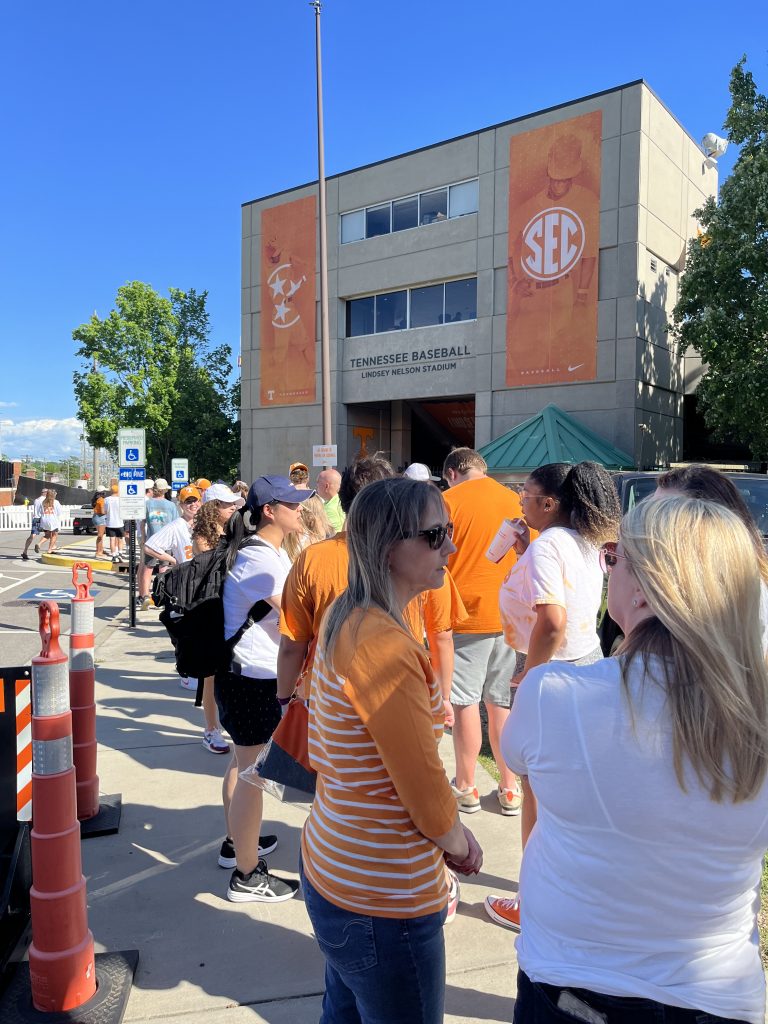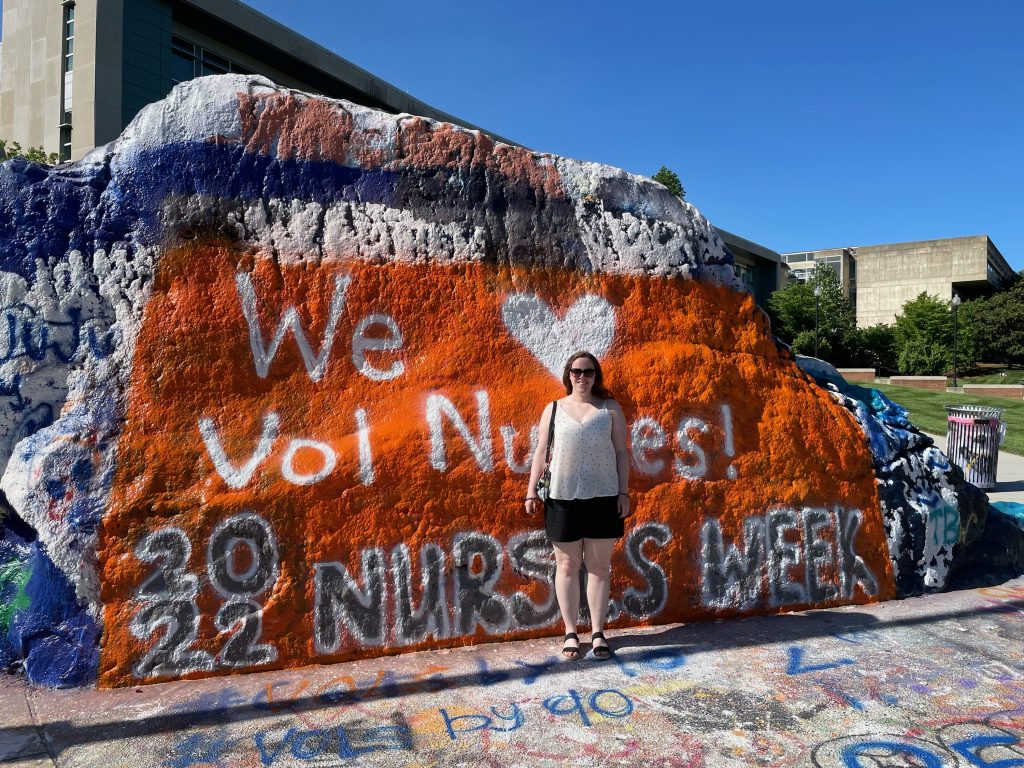Picture gallery at the bottom of the blog!
Let’s face it, orange isn’t a particularly flattering color on a big guy. Especially shirts with horizontal stripes. Even so, there is a lot of orange worn in Amy’s family. The youngest of four siblings, Amy and her brother and sisters all went to the University of Tennessee and then three of her nephews, Eric, Andrew, and Thomas, became football managers during their years in Knoxville. Eric and his wife, Tyra, both now work for UT – he in the alumni/ae office and she in communications – and their three boys are all Vol all the time. I slept last night in their third-floor attic/tv room that is a shrine to UT football. So, when Leah and I came over yesterday to watch #1 UT baseball team take on UGA I donned one of the two Vol shirts I own. The good thing is no-one noticed because I simply blended into the sea of orange at the ballpark!
And what a solid game. Vols won 5-2 but the outcome was never in doubt. The stadium was packed, and it was refreshing to see so much student support for the team. Even more fun was spending time with Leah. Having a chance to read and catch up on correspondence made for a relaxing day and morning too.
One piece that caught my eye in the NYT yesterday was Catherine Pearson’s article, “How Many Friends Do You Really Need?” It covered a lot of traditional ground – how loneliness is epidemic and “is as harmful as smoking 15 cigarettes a day”, how having friends is a boon, how making friends as an adult can be a challenge, how there isn’t a “magical number.” (Here’s a link: https://www.nytimes.com/2022/05/07/well/live/adult-friendships-number.html?referringSource=articleShare). This paragraph caught my eye as I was not familiar with the “Dunbar number.”
The best-known theory of how many friends people can (though not necessarily should) have comes from British psychologist and anthropologist Robin Dunbar. What has come to be known as Dunbar’s number contends that humans are only cognitively able to maintain about 150 connections at once (subsequent research has put the number higher). That includes an inner circle of about five close friends, followed by larger concentric circles of more casual types of friends.
I came away simply grateful for the friends I have – from grade school and high school, from college and seminary, from each of the churches I’ve served, and from serendipitous encounters and activities outside of work and school.
This morning I was reading N.T. Wright’s essay, “Joy: Some New Testament Perspectives and Questions” in the book Joy and Human Flourishing: Essays on Theology, Culture, and the Good Life. His argument is the character of joy in NT is the root of sacramental theology. “The human joy of food and drink, of family and civic life, were taken up and transformed, with many paradoxes along the way, into the Jesus-believing joy of Eucharist and united fellowship” (p. 61). I think he is on to something. The breaking of bread with friends is a foretaste of the Kingdom that is at once present and still coming. Today Leah and I drive back to Nashville and tonight I’ll pack for the next leg of the sabbatical, a conference with clergy friends in Lake Tahoe. The flight out leaves at 5:30am tomorrow morning. Pray for me!




